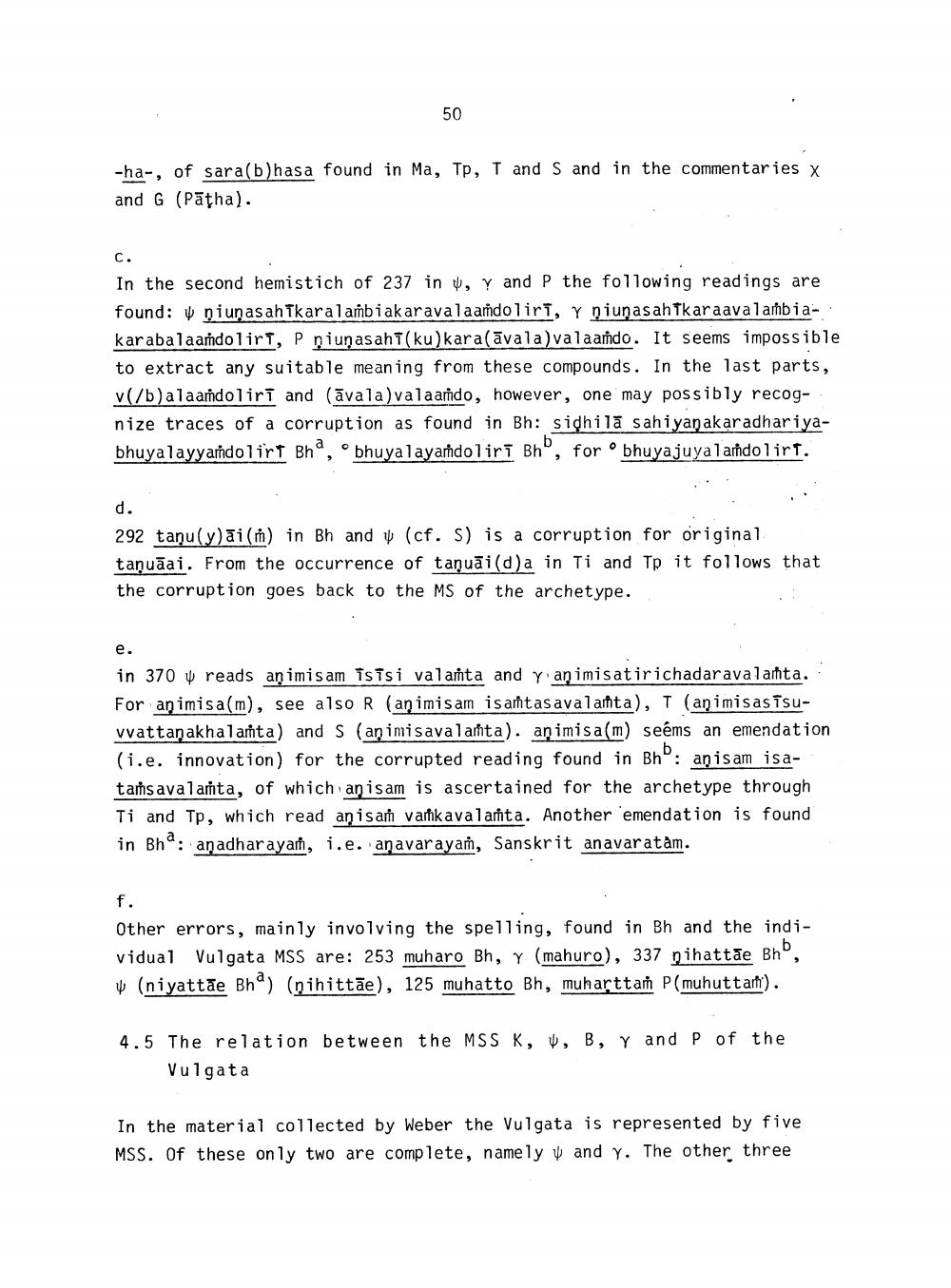________________
50
-ha-, of sara(bhasa found in Ma, Tp, T and S and in the commentaries x and G (Pātha).
In the second hemistich of 237 in), Y and P the following readings are found: u niunasah Tkaralambiakaravalaandoliri, y niunasah Tkaraavalanbiakarabalaaṁdoliri, P niunas aht(ku)karalāvala)valaando. It seems impossible to extract any suitable meaning from these compounds. In the last parts, v</b)alaamdolirī and (āvala)valaando, however, one may possibly recognize traces of a corruption as found in Bh: sidhilā sahiyanakaradhariyabhuyalayyandolirt Bha, bhuyalayardolirī Bho, for bhuyajuyalandolirt.
d.
292 tanu(y)āi(mn) in Bh and (cf. S) is a corruption for original taņuāai. From the occurrence of tanuāi(d)a in Ti and Tp it follows that the corruption goes back to the MS of the archetype.
in 370 W reads animisam Tsisi valanta and y animisatirichadaravalarta. For animisa(m), see also R (animisam isatasavalaita), T (animisas Tsuvvattanakhalata) and 5 (animisavalata). animisa(m) seems an emendation (i.e. innovation) for the corrupted reading found in Bho: anisam isataṁs avalaṁta, of which anisam is ascertained for the archetype through Ti and Tp, which read anisam varikavalasta. Another emendation is found in Bho: anadharayan, i.e. anavarayan, Sanskrit anavaratam.
Other errors, mainly involving the spelling, found in Bh and the individual Vulgata MSS are: 253 muharo Bh, Y (mahuro), 337 nihattāe Bho, ♡ (niyattāe Bha) (nihittāe), 125 muhatto Bh, muharttań P(muhuttarfi).
4.5 The relation between the MSS K, M, B, Y and p of the
Vulgata
In the material collected by Weber the Vulgata is represented by five MSS. Of these only two are complete, namely and y. The other three




